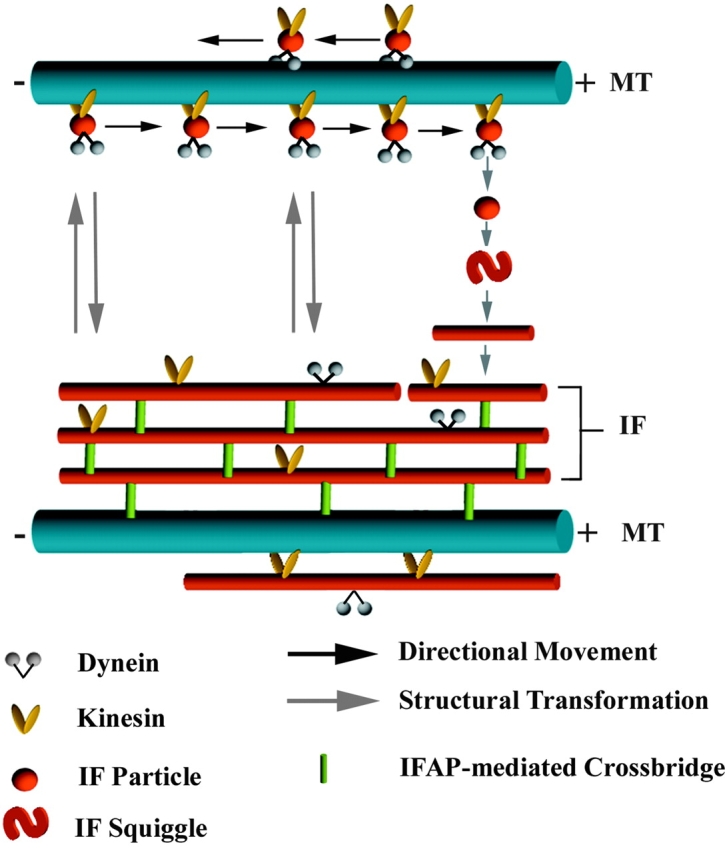Figure 1.

A model illustrating the possible mechanisms that underlie the dynamic properties of interphase IF networks. The model involves the interplay of three different regulatory processes: (a) reversible structural transformation between long filaments, short filaments (squiggles) and particles (non-filamentous oligomers), (b) transport of squiggles and filaments towards either the plus (cell periphery) or minus end (cell center) along microtubule tracks, (c) IFAP-mediated cross-links between neighboring IF and between IF and microtubules. The structural changes between different forms of IF are independent of microtubules and motors. The process is probably regulated at least in part by reversible phosphorylation of IF subunits. The higher the phosphorylation state of IF proteins, the more abundant the number of non-filamentous IF particles and squiggles. In spreading cells, the formation of new IF in the advancing cytoplasm is achieved by combined action of rapid microtubule-directed transport of IF particles from the cell center towards the periphery and of the local assembly of IF. The motility of individual filaments is counterbalanced by enhanced mechanical stability of IF. This may be accomplished by IFAP-mediated cross-links between neighboring IF and among different cytoskeletal systems, a process that is likely regulated by protein phosphorylation as well.
